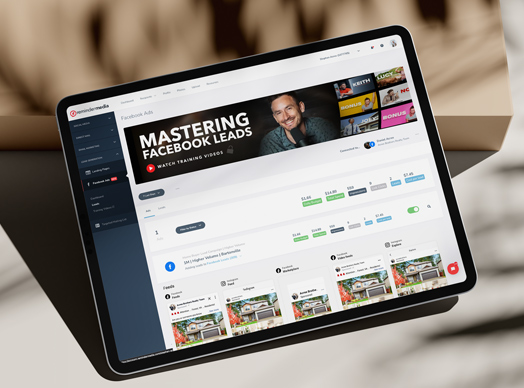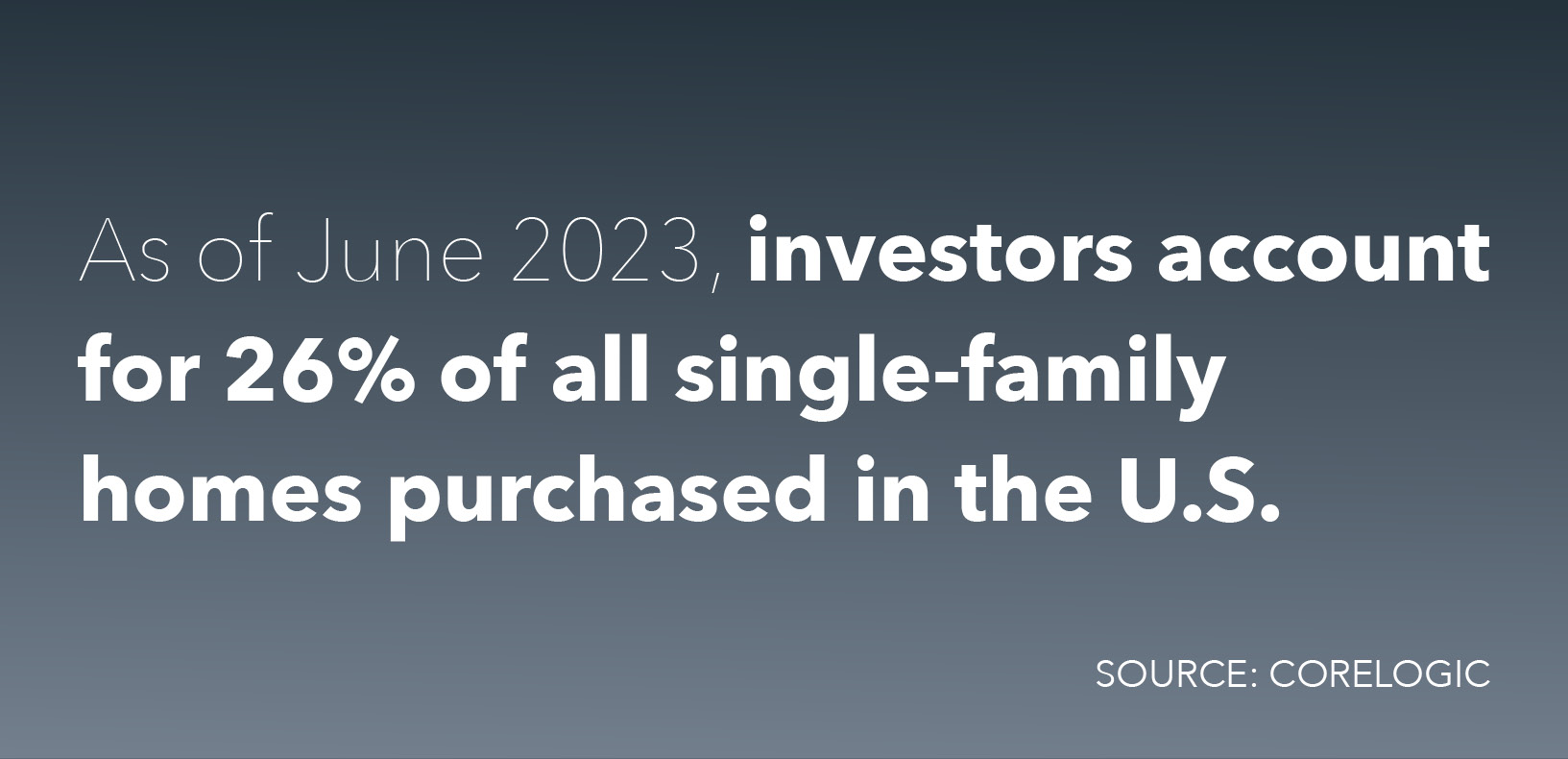The key is to understand the current market and use what you know to your advantage
As an agent, you’ve likely had your fill of the doom and gloom permeating all things real estate. High interest rates, low home inventory, inflation—these factors are causing many agents to wonder whether a career in real estate is still worth the trouble. Truthfully, there are plenty who will likely call it quits, but you don’t have to be one of them!
All you need to do to thrive where other agents are just surviving is to solve clients’ problems. And in the housing market today, the most prevailing one is finding new home listings. According to Stephen Acree, founder of Acree Brothers Realty–Keller Williams in Lynchburg, Virginia, the key is to understand the market and use what you know to your advantage.
You start by changing the script
Stephen and his team of 14 agents are booking appointments every week with buyers and sellers largely because they have rejected the idea that it’s a terrible time to be in real estate. Rather than throwing a pity party, they have recommitted themselves to following the basics of sound lead generation.
For Stephen, what he’s experiencing is an “incredible” market for agents, and each day is about “how many dials did you make, how many conversations did you have, how many appointments did you set, how many contracts did you write, and how many closings did you get.” His agents are averaging between 100 and 120 calls a day to leads, prospects, and clients. Stephen reports, “I had one agent book 24 appointments last week. He’d be making more calls, except he’s busy meeting with buyers and sellers!”

Experienced agents know that there are always shifts in the real estate market. What’s happening now is no different apart from for one thing. As Stephen remarks, the people who are buying and selling today are those who need to move, whether because of a growing family, divorce, death, job change, debt, or some equally compelling reason. “Find these motivated sellers,” he says, “and because buyer demand is higher than the supply of homes available, you’ll be able to sell their homes and secure a contract to help them find another.”

But even as Stephen’s team focuses on serving those who must move, they aren’t overlooking the opportunity to fill their pipeline with future clients. “Right now,” he notes, “it doesn’t make sense for someone to move from a mortgage at 4% to one at 7% or 8%; homeowners won’t do it. But we continue prospecting because there is a ton of equity out there, and when rates do drop and the market turns, it’s going to be wild. All the pent-up demand is suddenly going to be let loose, and agents who have taken the time to build and nurture relationships now will have the bulk of the market.”

CLICK HERE to get a free PDF sample sent to your inbox.
Proven strategies for finding sellers and listings
With the right mindset in place, Stephen and his agents have been successfully finding and converting buyers and sellers using the following strategies.
Connect with absentee owners
As the term suggests, absentee owners are people who own a property they do not occupy. They may, for example, have inherited a house they need to sell or possess a rental property that isn’t producing income. Because they don’t live in these assets, not being able to find a place to move isn’t a concern, and owning these properties is often a burden they want to relieve themselves of. Stephen and his team are using circle prospecting to find these properties and actively seeking out buyers who want to purchase them.
There are a variety of data providers agents can use to find absentee owner leads. Stephen’s agents are consulting several, including:
It’s true that many would-be homebuyers are weighing whether now is the right time to purchase a house, but this is also where an agent’s understanding of the market and their ability to educate their clients is crucial. Among the conversations Stephen’s team is having with prospects are those about never being able to time the market, and waiting until interest rates go down isn’t always the best strategy.
As Stephen explains, the old adage that you date the rate and marry the home is a viable strategy. “Buying a house is a long-term investment, and we tell prospective homebuyers that the sooner they purchase a home, the sooner they start to build equity. When rates drop, they can always refinance.”

If buyers wait for mortgage rates to fall, any money they save in interest may be a wash because once interest rates come down, home prices will likely go up.
Additionally, he points out that buying now means avoiding potentially more rate hikes later. And if buyers do wait and rates do fall, any money they saved in interest may be a wash because home prices will likely go up. Essentially, Stephen advises, whether to buy is a decision people will make on their terms, but if you have a buyer with an excellent credit score, a sufficient down payment, and secure employment, and who intends to stay in the property for a while, then they should consider buying and waiting rather than waiting and buying.
A second source of buyers is investors, and it’s not as if you need to call thousands of numbers to find them either. As of June 2023, this group accounted for 26% of all single-family home purchases in the country—a percentage that can be much higher depending on a specific location. And in a shift from previous years, it’s the smaller investors (those owning three to nine properties) who are growing their market share, accounting for 47% of purchases by investors, which is the highest level since 2011. According to Stephen, he and his team are finding investor leads “left and right.”
Engage in circle prospecting
In case you aren’t familiar with circle prospecting, it involves contacting people within a set radius of a recently sold or listed home to ask if they or someone they know may be interested in moving. It’s a way of engaging homeowners in a community who are naturally curious about the sale of a home in the vicinity—which property was sold, how long was it on the market, how much it sold for, and similar questions.

Circle prospecting engages homeowners naturally curious about the sale of a home in the vicinity, including how much it sold for and perhaps sparking a conversation about home values.
Typically, circle prospecting doesn’t lead to an immediate transaction. While you are directly asking people for their business, the more likely result is an introduction in which you position yourself as a credible agent who has just sold a home and, at some future time, can do the same for them. In this way, circle prospecting is a type of farming where your goal is to develop long-term relationships with prospects you can nurture into clients.
In this climate, however, Stephen’s team is more purposeful about using circle prospecting to find leads they can convert now—not later. Their strategy is to select and visit a high-rental area, look for properties with signs of distress (overgrown grass, work being performed, or evidence of general neglect), plug the addresses into Whitepages, pull the names and phone numbers of the owners, and call them. Using just this strategy, Nathan (one of Stephen’s agents) set three appointments in a single week.

Owners of distressed properties often want to unload their burden and, when approached in the right way, may see selling as a way out.
When speaking with these property owners, Stephen uses a circle prospecting script designed as a “light sell,” which he describes in detail here. The key is to ask these owners if you could find them a buyer, would they be “open to an offer or conversation”—not if they would be interested in selling. Once you’ve piqued their interest, ask what kind of an offer they would consider. Stephen remarks, “Often they are shocked by how much they could possibly get because while the number of properties for sale is low, demand remains high.”
Pursue off-market properties
A big advantage of having a strong team of agents is that you gain the opportunity to circulate among them listings that haven’t been put on the market yet. For instance, one agent may bring in a property and deliver it to another agent who has a buyer.
Similarly, if you work with a brokerage, there are often exclusive rights that allow agents to work with clients served by the same brokerage.

You can also look to other agents you have relationships with; they may be willing to share their listings before putting them on the market. Stephen has personally been able to reengage buyers who haven’t seen houses in six months because another agent shared an off-market property with him. Just be diligent about knowing the laws pertaining to off-market sales in your area before going down this route.
Continue following traditional leads
Adding these new prospecting strategies to your toolbox is no reason to give up on the tactics that have always worked. Stephen’s agents continue to call FSBO and Zillow leads, follow up multiple times with leads generated by Facebook ads (they get 50–70 per week), and tap into their spheres, which is producing about 48% of their deals.

CLICK HERE to learn more about done-for-you Facebook advertising.
This last one in particular is a lucrative source of new leads you should be pursuing. As Stephen explains, agents should commit themselves to solving people’s problems. “You may have a buyer from three years ago who has massive equity in their home but doesn’t know it,” he points out, “or one who wants to move but may not know the price of their home and so doesn’t think they can.” (This is where sending free CMAs to your list becomes an especially valuable tactic for finding potential leads.)

He continues, “If you approach a homeowner to let them know you have a buyer interested in their home and that you’re calling to see what their interest may be if they were to get a good—maybe great—offer, that opens the door to a conversation because most people do want to know the value of their homes.”
Final thoughts
There is no denying that the market right now is tough, but Stephen contends that agents need to be excited about the transaction and the relationships with their clients. He claims, “Even newer agents who may not be confident because of their lack of knowledge and experience can still display a stellar work ethic and great attitude. Check for new listings every day. Call your clients. Show them your working. Clients will take their cues from their agents.”
“In the end,” he declares, “there are only a few activities that actually work to make you money, and they are the same today as they have always been. Agents need to commit to the basics—they need to be having conversations so they can set appointments, secure listings, and close deals. We set daily goals, weekly, and monthly goals for each activity because you can’t hit a target you haven’t created. It’s that simple, and it’s working.”









 Apple Podcasts
Apple Podcasts
 Google Play
Google Play
 Spotify
Spotify
















